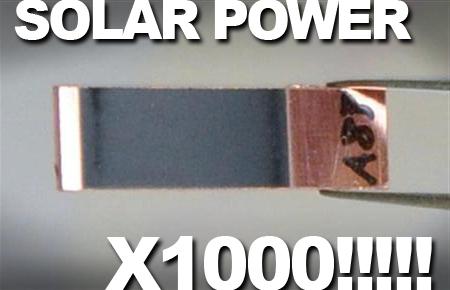Okayama Solar Absorbers Use “Green Ferrite” to Generate Super-Cheap Electricity from Heat
This could be the big breakthrough I've been expecting for a couple of years now. I have been reluctant to install a bunch of PVE panels on my roof given it's basically 30 year old technology. I wrote about that here:
http://www.squidoo.com/cling-film-solar-cells-could-lead-to-advance-in-renewable-energy-
If these guys are on the money, PVE technology will be obsolete, it makes a great deal of sense to harness the thermal energy of the sun and not just the light.
I'm more hopeful than ever right now for a new roof made entirely out of collector coated Aussie colorbond corrugated steel, that is the ideal outcome for me.
Source: Clean Technica (http://s.tt/13imq)

Okayama Graduate School of Science and Technology is one of many developing solar cells and batteries, but its research team, led by one Professor Naoshi Ikeda, has a unique approach. Instead of silicon, currently the standard component in solar cells, the Okayama team is using an iron oxide compound it calls “green ferrite,” or GF. Professor Ikeda has gone so far as to claim his product will produce 100x the amount of energy as a traditional silicon solar cell.
Part of the increase in energy production would come from the infra-red spectrum — solar cells do not currently convert heat into electricity, but apparently the green ferrite has that capability. Professor Ikeda speculates that any area collecting waste heat (the ceiling of your kitchen, for example) could serve as a home for a GF solar cell.
The team’s goal is to create a battery capable of generating 1KW of energy for 1/1000th of the cost of a traditional silicon solar cell, which comes out to about 1000 yen ($12 American) per GF cell. The GF cells, which currently use green ferrite in a powdered form, should also allow for some flexibility in solar panel shape, which means they could be wrapped around things like chimneys or telephone poles.
As the early tests have been fairly successful, the Okayama team is hoping for a usable product by 2013.
Source | Picture: MSN Sankei
Source: Clean Technica (http://s.tt/13imq)

